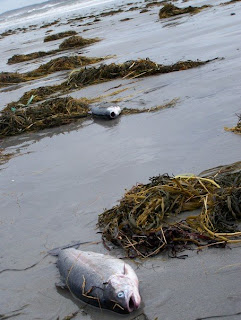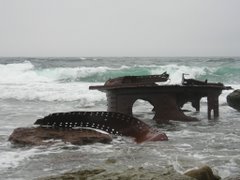

 Riparian rights is a term from British Common Law. It refers to the designation of a river or stream as an article of real property claimed by the owner of the lands through which it flows. In my last post, I mentioned fishing private water in the province of Quebec. Private water no longer exists in Nova Scotia, unless you count man-made trout ponds, or backyard swimming pools. The law states:
Riparian rights is a term from British Common Law. It refers to the designation of a river or stream as an article of real property claimed by the owner of the lands through which it flows. In my last post, I mentioned fishing private water in the province of Quebec. Private water no longer exists in Nova Scotia, unless you count man-made trout ponds, or backyard swimming pools. The law states:
"As a resident of the province you have the right to go on foot along the banks of any river, stream or lake and upon and across any uncultivated lands and Crown lands to lawfully fish with rod and line in these rivers, streams or lakes; you also have the right to use a boat or canoe on or across any river, stream or lake." (The Angling Act)I was surprised to learn that much of the Medway River and the right to fish from Bangs Falls to Poultice Falls was once owned by a man named Michael Dwyer. Compare the letter of the law with the tone of Mr. Dwyer's letter to Mr. McGinty dated June 02, 1909. (Click to enlarge.)
I can only surmise that Mr Dwyer had made agreements with all three men named in the letter. Mr. Dwyer mentions sharing the expense of keeping a guardian on the river. I believe Payzant and Silver were contributing financially to this effort and, as such, expected first rights when Dwyer was not on the river. Included with the letter was a hand-drawn map showing the location of Michael Dwyer's lands. (Click to enlarge.) On the map, there is mention of Dwyer having purchased land from McGinty. Perhaps a condition of the sale was that McGinty would be allowed to continue to fish the river. The matter was eventually resolved with the passing of The Water Act of 1919 which terminated all private riparian rights, and transferred them to the government of Nova Scotia.
If you're thinking that this legislation was created to provide equal access for all anglers, think again - equal and free access for anglers was only a fringe benefit. The driving force behind the Water Act was to expropriate the province's waterways for future hydroelectric development.
Good Luck and Good Fishin'!
-Random Phrump

























